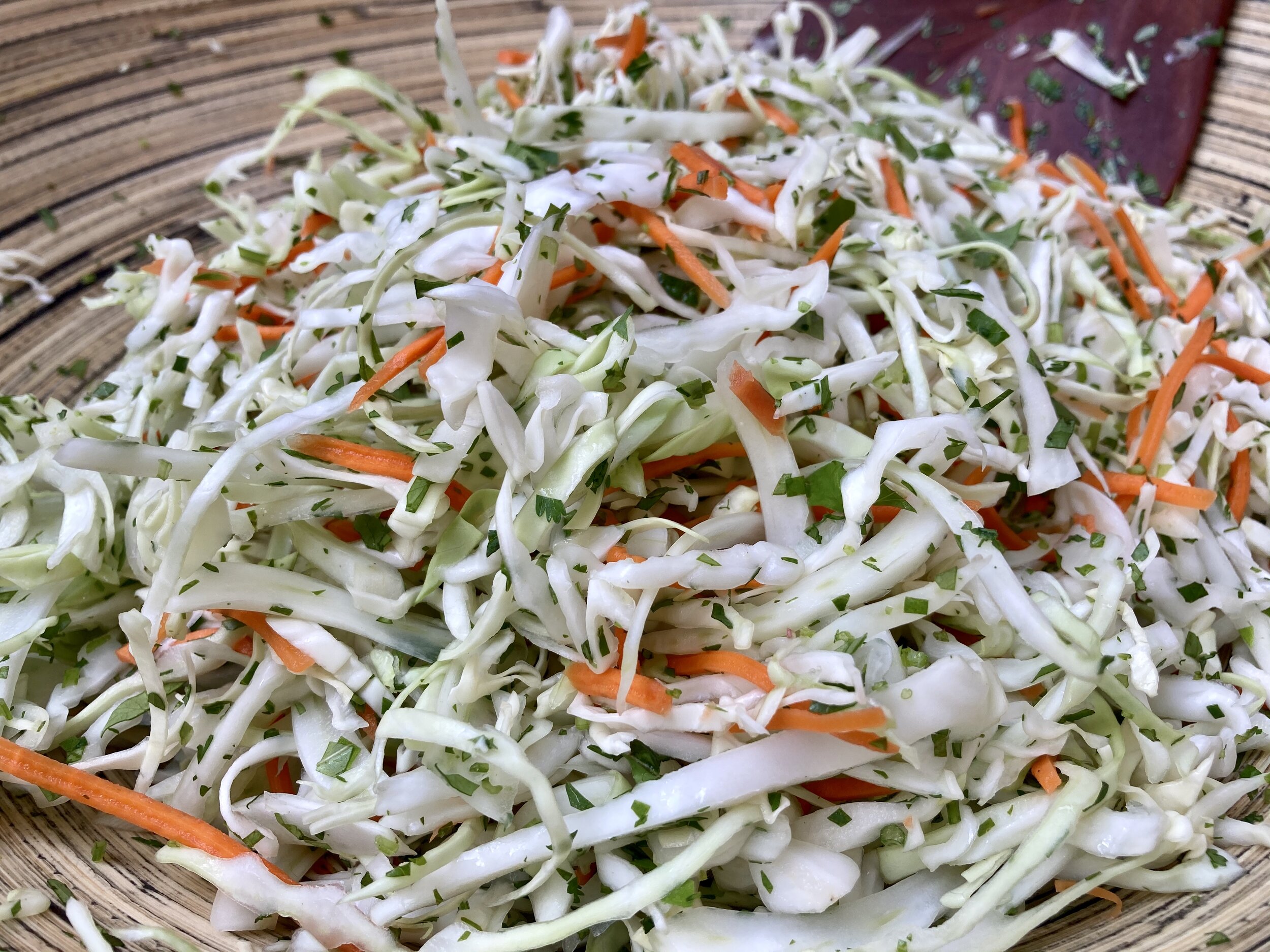What Do You Do with Fennel?
A love letter to the underappreciated
There’s no point in subterfuge here, so I’m going to say this right upfront:
Fennel is my favorite vegetable of all time.
Not because I have fond childhood memories of it – I couldn’t stand licorice-y flavors as a kid (Red Vines® don’t count), and never even saw a piece of fresh fennel until I lived in France as a near-adult. My fennel fascination began when I was in culinary school, and it’s only grown over the years.
Why do I love fennel?
Because it’s sweet without being sugary. Herbal without being medicinal. It’s both delicious and healthy. And, you can use the plant a million different ways to make something yummy!
“The bulb, the stems, the leaves, the flowers’ pollen, and the seeds are all edible, and all fantastic in different ways.”
You can (and should) eat everything you see in this picture. Except the wood.
Fennel pollen + herbes de Provence = great topping for olives.
I’ll talk about fennel seeds and fennel pollen another time. But here’s a quick guide to making the most of what you buy from the farmers’ market or grocery store.
The Fennel Bulb
This is the part of the plant with the strongest anise flavor when raw, but it’s also the best part to cook. The anise flavor mellows when it’s cooked, and the juicy crunch changes to a soft, succulent texture. Here are my favorite ways to eat it:
Cut into sticks or scoops, and eat raw as crudités (ideal with garlicky dips where you want something to refresh the mouth afterwards).
Slice very thinly, to use raw in salads (it adds crunch with a refreshing herbal lift).
Chop with equal parts apple, for a twist on pico de gallo (mix with a little chopped red onion, cilantro or mint, and a squeeze of lemon).
Cut into quarters or eighths through the root, and grill or roast until caramelized (way better than caramelized endive, and it plays nice with other roasted root vegetables).
Chop and cook like an onion, to add another flavor dimension to any recipe an onion might be welcome. (For example, this fennel brandade recipe I wrote a few years ago.)
Glorious braised lamb tacos with shaved fennel bulb, julienned apple, pickled onions, mint, cilantro and yogurt. At Southside Century in Napa.
The Fennel Stalks
Virtually everyone throws these away, but these long, fibrous stalks have the sweetest anise flavor of any part of the plant. Always take them home! They freeze well (if you’re not going to use them raw), and there are so many great, easy ways to put them to use:
Bruise them and steep in boiling water to make fennel tea (a fantastic alcohol-free digestif when you’ve gorged yourself beyond reason; also tasty on ice, anytime!).
Bruise them and let them steep with sugar in Everclear a few weeks, to make a Sardinian-style alcoholic digestif (you can also use fennel seeds for this).
Bruise them and add to any stock or soup for a subtly sweet, herbal note. (Remove before serving, like you would a bay leaf or bouquet garni.)
Score or bruise them, and stuff inside whole fish or poultry to infuse the meat with flavor.
Slice crosswise very thinly (remember, they’re fibrous) on the diagonal, to eat raw in salads like celery.
Use them in place of celery for any cooked recipe you want (I even use it in mirepoix).
With the fronds still attached, add to a floral arrangement.
The incredible wild fennel polpette at Tischi Toschi in Taormina, Sicily.
The Fennel Fronds
Tragically, fennel’s feathery fronds are another part that typically gets tossed straight in the compost bin. These beautiful dark green “leaves” are less intensely flavored than the bulb or the stalk, but well worth cleaning up and using. Think of them as free herbs that come with the bulb.
Though the texture of the fronds is not as delicate as tarragon or chervil, fennel fronds are a lovely way to dress up almost everything.
Use in large sprigs as a pretty garnish for any dish (deviled eggs, smoked salmon, roasted veggies, steak, chicken, fish, etc. etc.)
Use them up (along with the stems) in Sicilian dishes like fennel polpette.
Chop finely and use as a finishing herb to add a light anise taste and nice color. (This is particularly useful with pale dishes).
Use in place of fresh dill, always. (Dill is an abomination, in this author’s view.)
Do you have any favorite ways to eat fennel? Tell me on Facebook or Instagram!














